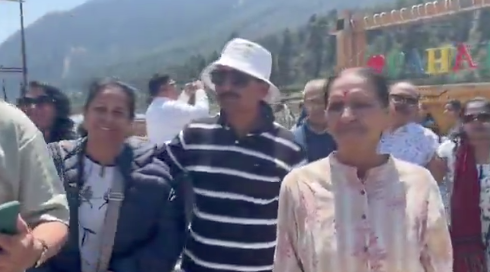Srinagar, April 28, 2025 – The Kashmir Valley, renowned for its breathtaking landscapes and warm hospitality, is witnessing a heartening recovery in its tourism industry following the tragic Pahalgam terror attack on April 22, 2025, which claimed 26 lives, including 25 tourists and local hero Syed Adil Hussain Shah. Despite an initial plunge in tourist numbers from 5,000–7,000 daily visitors to just 50–100 in Pahalgam, travelers are returning with renewed hope, reflecting Kashmir’s resilience and unbreakable spirit in the face of adversity.
The attack at Baisaran meadow, perpetrated by four terrorists linked to Lashkar-e-Taiba, including local operative Adil Hussain Thokar, triggered widespread fear, leading to an 80% cancellation rate of bookings and 13 lakh reservations scrapped for August alone, as reported by the Jammu and Kashmir Hotels and Restaurants Association. The region’s tourism, which saw a record 35 lakh visitors in 2024 compared to 27 lakh in 2023, faced a potential collapse as hotels shuttered and streets emptied. The incident threatened to undo years of progress in reviving Kashmir’s image as a safe, tourist-friendly destination.
Yet, by April 27, signs of revival emerged. Pahalgam, dubbed “Mini Switzerland,” began welcoming back domestic and international tourists, drawn by its serene beauty and the community’s unwavering hospitality. Local reports indicated 921 visitors on April 26, rising to 1,121 the next day, a promising uptick. Tourists like Mohammad Anas from Surat expressed solidarity, stating, “We’re here to support Pahalgam’s recovery. Kashmir’s charm is undimmed.” International visitors, including groups from Croatia and Thailand, echoed this sentiment, citing confidence in enhanced security measures and the valley’s allure.
Local efforts have been pivotal in this turnaround. Residents organized a protest march in Pahalgam, waving the national flag to signal unity and defiance against terrorism. National Conference MLA Altaf Wani highlighted the gradual return of tourists, emphasizing that the attack failed to derail the season entirely. Actor Atul Kulkarni visited Pahalgam on April 27, urging travelers to return in droves to bolster the local economy, a call amplified across social media platforms like X, where posts celebrated Kashmir’s spirit with hashtags like #KashmirRising.
Chief Minister Omar Abdullah, speaking at the J&K Legislative Assembly, urged tourists not to abandon Kashmir, warning that an exodus would fulfill the attackers’ goal of crippling tourism, which employs over 3 lakh people directly and indirectly. “Our enemies want to scare you away. Don’t let them win,” he said during a session that observed a two-minute silence for the victims. The Assembly’s resolution condemned the attack and committed to fostering peace and harmony, aligning with the vision of a Viksit Bharat.
Enhanced security measures have bolstered confidence. The National Investigation Agency (NIA) is probing the attack, leveraging evidence like a tree-top video and an Army officer’s testimony to dismantle the terror network. Authorities demolished the homes of 10 suspected terrorists, including Thokar’s, signaling a zero-tolerance stance. The Jammu and Kashmir Police and Border Security Force (BSF) have intensified patrols, ensuring safety for visitors, which has reassured tourists like a Thai group that arrived just a day after the attack.
The tourism industry, though bruised, remains optimistic. Mushtaq Chaya, chairman of the Kashmir Hoteliers Association, acknowledged the financial hit but prioritized the human loss, stating, “Our hearts are with the victims, but Kashmiris stand united against terror.” Industry voices like Jyoti Mayal of the Tourism and Hospitality Skill Council called for collective support to sustain the recovery, emphasizing Kashmir’s role in India’s tourism narrative.
Challenges persist, including the need to rebuild trust and counter misinformation, as seen in India’s ban on 16 Pakistani YouTube channels for spreading fake news post-attack. However, the return of visitors from Gujarat, Serbia, and beyond, coupled with local resilience, paints a hopeful picture. Pahalgam’s streets, once quiet, are buzzing again, with vendors and pony operators like those in Shah’s community welcoming tourists with open hearts.
Kashmir’s recovery is a testament to its enduring appeal and the collective resolve of its people. As tourist numbers climb, the valley’s journey forward is defined by courage, hospitality, and an unyielding commitment to peace, proving that even in the face of tragedy, Kashmir’s spirit remains unbreakable.



